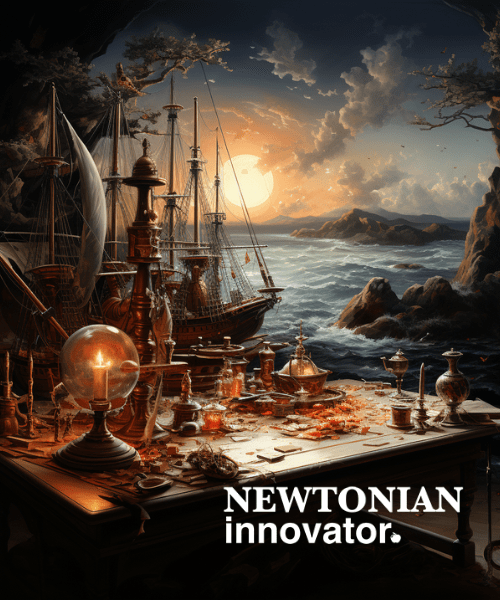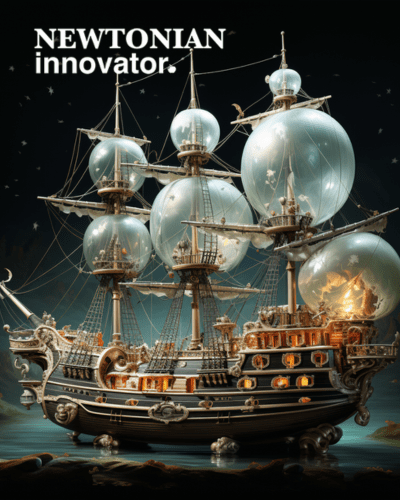In order to explain the concepts of inertia and relative motion, Galileo devised a thought experiment involving a ship sailing smoothly across the sea. He imagined observers on the ship conducting experiments, unaware that the ship was actually in motion. Galileo realized that the motion of the ship would be imperceptible to those on board, and any experiments done on the ship would yield the same results as if the ship were stationary. This led him to the principles of inertia, that motion is relative to a frame of reference. Galileo’s ship thought experiment was an influential idea that formed the foundation of modern physics.
Galileo Galilei was born in Pisa, Italy in 1564. His father, Vincenzo Galilei, was a well-known musician and music theorist. Galileo was one of seven children, and as the eldest son was expected to become a medical doctor. However, Galileo soon became fascinated by mathematics and natural philosophy, the precursor to modern science. He studied those subjects informally under the mathematician Ostilio Ricci, developing his skills in geometric and military compass design.
In 1589, Galileo was appointed to the chair of mathematics at the University of Pisa. During his time there, he began to study physics and astronomy, conducting experiments with pendulums and falling objects. Galileo was very outspoken and frequently criticized Aristotelian professors, leading to conflicts with university authorities. In 1592, Galileo left Pisa for the University of Padua, remaining there until 1610. During his 18 years in Padua, Galileo had three children out of wedlock with Marina Gamba. He never married Marina, which led to controversy, but was not uncommon at the time. Galileo continued his studies on motion while supporting his family financially through teaching and selling his inventions.
Galileo’s thought experiment involving a ship sailing smoothly on a calm sea was a breakthrough moment in the development of his ideas about motion and mechanics. Though it was a purely hypothetical scenario imagined in Galileo’s mind, the ship metaphor laid the groundwork for major advances in physics.

By considering the ship’s motion imperceptible to those on board, Galileo realized that motion must be measured relative to some frame of reference. This relativity of motion was a key early step toward overturning Aristotle’s view that the Earth was stationary. Galileo later expanded on this insight with his theory of inertia, which says objects in motion tend to stay in motion unless acted on by an outside force. This idea challenged Aristotle’s belief that a constant force was needed to maintain motion.
The ship thought experiment helped provide the conceptual foundation for Galileo’s views on physics. It encouraged him to pursue more experimental work on gravity and motion, including demonstrations like dropping weights from the Leaning Tower of Pisa. Word of Galileo’s ideas and disputes with Aristotelian professors spread widely, enhancing his reputation. While controversial, the ship metaphor and subsequent theories cemented Galileo’s place as a pioneering scientist of the Scientific Revolution. His defense of the Copernican model against church doctrine ultimately led to his life under house arrest. However, Galileo kept writing and publishing, asking his readers to imagine a ship sailing smoothly across the sea, with no rocking or disturbance of the waters. The ship maintains a constant, uniform motion with no acceleration or deceleration.
Below the deck of the ship, a cabin contains a variety of objects at rest relative to the ship – bottles sitting on tables, fish swimming in bowls, butterflies fluttering through the air. The observers on the ship feel no motion and have no indication they are moving. If they perform experiments with pendulums, timers, or anything else, the results would be identical to if the ship were standing still.
Now imagine another ship passes this first ship at a constant speed. The two ships move alongside each other for a time. Those on the moving ships still sense no motion and feel as if they are completely at rest. Observers on shore would see the two ships in motion passing by. But for those on either ship, there is no experiment that could detect their movement.
This thought experiment contains the essence of Galileo’s relativity, that uniform motion is indistinguishable from rest, without an external point of reference. Therefore, motion can only be defined in relation to other objects.
Galileo then extended this notion to the Earth itself. Though we feel stationary on Earth, the planet is actually rotating daily and orbiting the sun annually. Like on the imaginary ship, we cannot sense these motions directly through our human capabilities. The Earth moves relative to the sun and stars, just as the ship moves relative to the shore.
With this thought process, Galileo elegantly avoided ancient objections about the Earth’s presumed immobility. The argument that we do not directly feel the Earth’s motion is irrelevant. Galileo’s ship also provided a brilliant explanation of inertia as the tendency of objects to continue moving unimpeded. On the moving ship, loose objects behave as if at rest, based on the ship as the frame of reference. Galileo realized objects in motion tend to stay in motion, with no forces needed to sustain or “push” the motion.
The deceptively simple metaphor of a smoothly sailing ship allowed Galileo to overcome misconceptions that had dominated physics for centuries. His relativistic conception of motion and the principle of inertia formed the core of classical mechanics, underlying much of subsequent physics including Einstein’s revolutionary theories.

Galileo’s ingenious ship metaphor exemplified the power of thought experiments in inspiring scientific theories. For centuries after Galileo, scientists continued using imagined scenarios to probe the laws of nature, often the catalyst for real-world experiments and discoveries.
In the 17th century, Galileo’s contemporary René Descartes imagined what would occur if all motion in the universe stopped. This led to an explanation of inertia as the default state of matter. Isaac Newton later contemplated concepts like gravity with thought experiments about falling apples and circling planets. He was able to derive his famous laws of motion through pure reasoning, confirmed later by observation.
In the early 20th century, Albert Einstein conceived his theory of relativity through imagined scenes like chasing after beams of light. Scientists still develop hypotheses today using thought experiments before testing them empirically in the lab. Galileo demonstrated the utility of stripped-down hypotheticals for illuminating the fundamentals of physics. His ship scenario proved motion was relative and objects tend toward inertia, superseding Aristotle. By inspiring others to pursue thought experiments, Galileo inspired a powerful scientific method that persists centuries later and still continues in today’s scientific arena.






